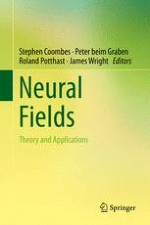2014 | OriginalPaper | Chapter
13. A Dynamic Neural Field Approach to Natural and Efficient Human-Robot Collaboration
Authors : Wolfram Erlhagen, Estela Bicho
Published in: Neural Fields
Publisher: Springer Berlin Heidelberg
Activate our intelligent search to find suitable subject content or patents.
Select sections of text to find matching patents with Artificial Intelligence. powered by
Select sections of text to find additional relevant content using AI-assisted search. powered by
